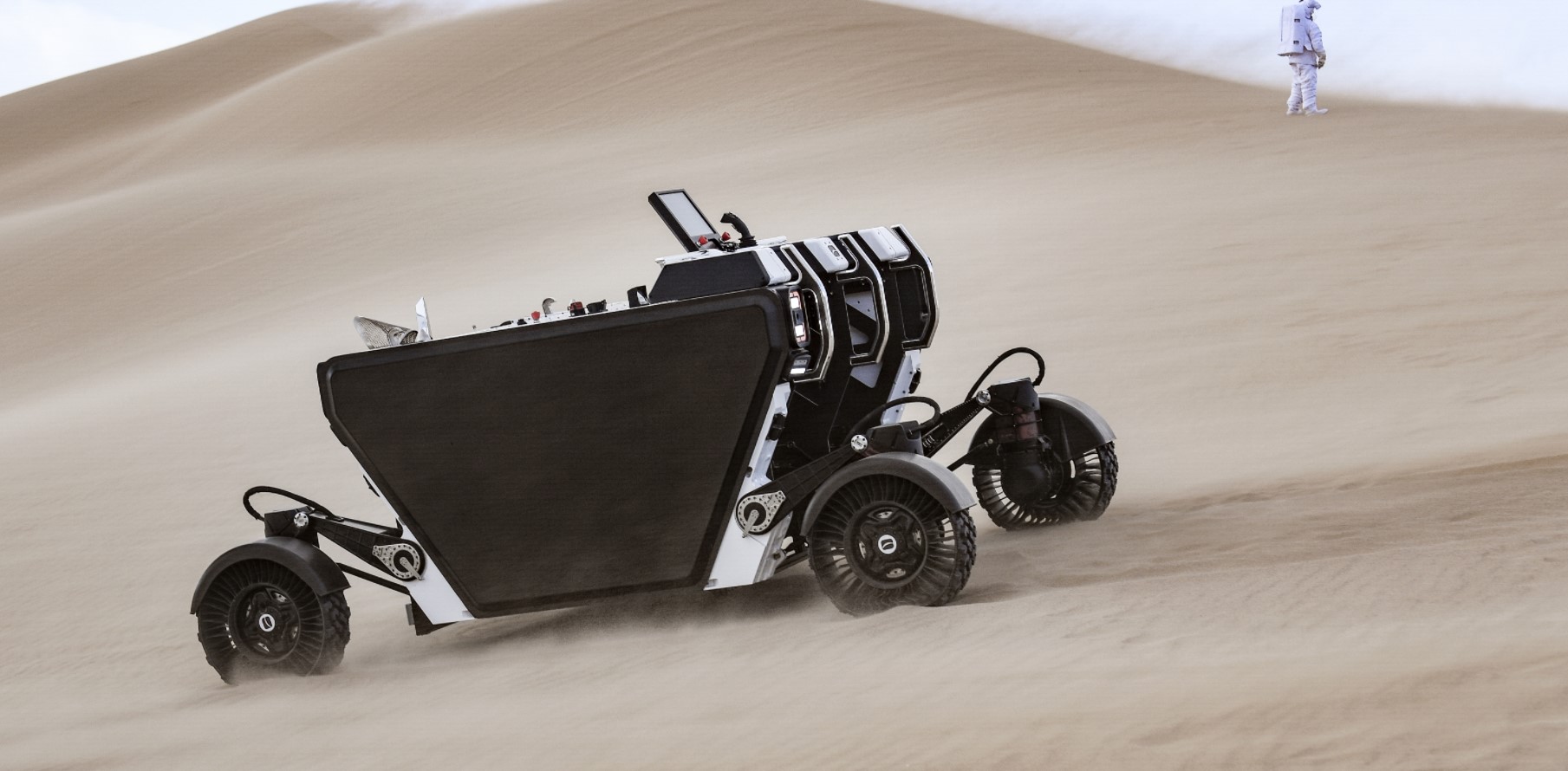As the Apollo astronauts found out, mobility is everything. Apollo’s Lunar Roving Vehicle (LRV) – sometimes called the Lunar Rover or Moon Buggy – completely changed how the astronauts could explore the lunar surface.
Harrison Schmitt of Apollo 17 said, “Without it, the major scientific discoveries of Apollo 15, 16, and 17 would not have been possible, and our current understanding of lunar evolution would not have been possible.”
Now, as NASA refines its plans for the return of humans to the Moon, commercial companies are contributing to the range of options that will be available for transportation across the lunar surface.
In this video, retired NASA/CSA astronaut Chris Hadfield shares his experience driving a new rover called the FLEX (Flexible Logistics & Exploration, built by a company called Venturi Astrolab, based in Hawthorne, California. Hadfield, on the company’s board of advisors, drove the rover across a landscape reminiscent of the Moon or Mars near Death Valley, California. Hadfield says in the video the rover is a “joy to drive.”

Powered by solar-powered batteries, the vehicle can drive two astronauts for eight hours, with enough energy capacity to survive the extreme cold of a lunar night, up to 300 hours in total darkness, such as at the Moon’s south pole, according to information from the company.
Astrolab said they are pioneering new ways to explore and operate on distant planetary bodies, and want to design, build and operating a fleet of multi-purpose commercial planetary rovers to extend and enhance humanity’s presence in the Solar System.
FLEX weighs about 500 kg (1,100 pounds) and has a 1,500 kg (3,300-pound) cargo capacity, about the same as a light-duty pickup truck. It will
The the company says they are developing FLEX “to support human operations, robotic science, exploration, logistics, construction, resource utilization, and other activities critical to enabling a sustained human presence on the Moon, Mars, and beyond.”
NASA says that surface mobility will be critical to the future of human space exploration on both the Moon and Mars, for exploration and for building outposts.

